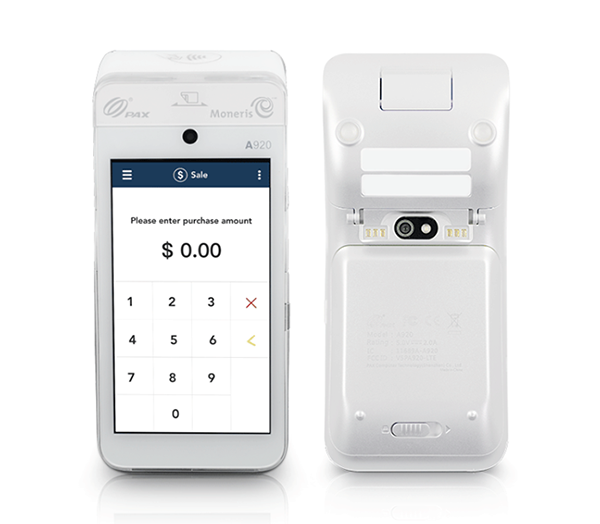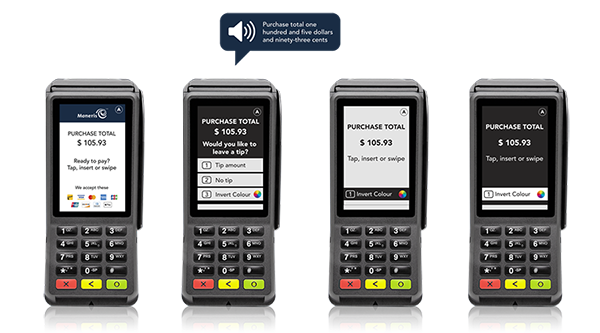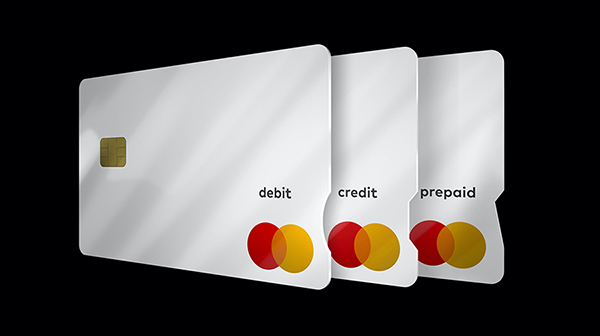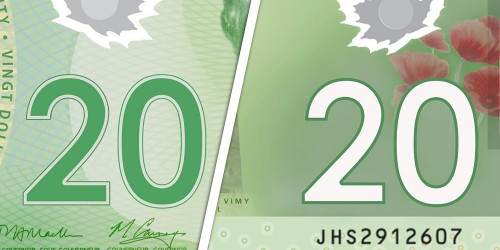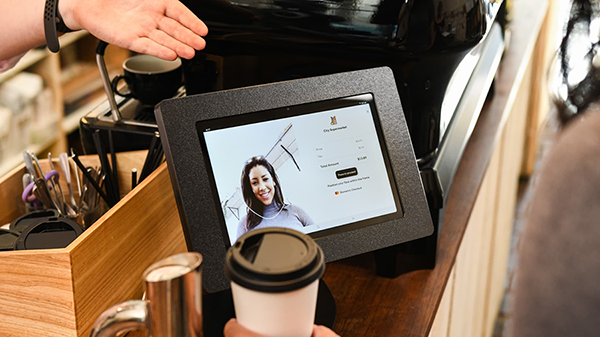Inclusivity in Canadian payments: Barriers for people with disabilities
Summary
Payments are inevitable; they are a part of every Canadian's life whether it be cards, cash, or mobile payments. However, payments are not always accessible. The digitization of payments can be seen as a double-edged sword. With advancements in technology, payments are becoming increasingly digitized and contactless, which may aggravate existing barriers to the inclusion of disability communities. However, payment providers and players in both public and private sectors have also been leveraging digitization to evolve their processes to be more inclusive of disability communities. These initiatives can facilitate equal participation in society by maintaining independence in payments.
Over one in five Canadians live with a disability.1 With this in mind, it’s especially important to promote inclusivity and create tools to promote equal economic opportunity and financial well-being for all.
In this paper, we examine the barriers to payments for communities with disabilities, provide an overview of the various initiatives that have been introduced to promote the inclusion of individuals who are blind or low vision, d/Deaf or hard of hearing, and individuals with mobility disabilities, as well as provide an overview of the opportunities for inclusion and accessibility as future payment options and experiences are introduced.
Note: This payment perspective has been reviewed by Ophira Calof, a disability consultant, to ensure inclusive language.
DISCLAIMER: Articles are written to reflect the interests and views of the author(s), and are not intended as an official Payments Canada statement or position.
Introduction
Increased digitization has allowed for many advancements within the payments sector. However, these benefits are not always experienced equitably. The impact on individuals with disabilities is unclear; they may be negatively affected by these new payment types, systems, and processes, as they can be a source of stress and a barrier to independence. However, these new payment types, systems and processes can also be leveraged to increase accessibility and inclusion.
This brings us to several questions: what are the barriers to inclusion in payments, and how has inclusion been encouraged and promoted? Specifically, what public and private sector initiatives have been spearheaded in Canada to promote the financial inclusion of individuals who are blind or low vision, d/Deaf or hard of hearing, and those with mobility disabilities? Finally, what is to be expected of inclusion in the future of payments?
Current state: Accessibility barriers and inclusivity initiatives
Throughout the payment experience, there are many barriers that may hinder accessibility for individuals with disabilities. It is also important to note that many disability experiences will not fit in the three categories examined below and that some individuals experience a combination (i.e., multiply disabled).
Individuals who are blind or low vision
It is estimated that over 1.5 million Canadians are blind or have low vision.2 As such, it is essential to accommodate these disabilities in order to be inclusive in all aspects of society, including payments.
For many, a payment experience begins at the checkout counter. It’s here that machine size, shape, layout, and appearance can pose barriers for individuals with disabilities. For example, touch screens with no tactile markings complicate the payment process, posing disadvantages for blind and low vision individuals.
Image 1: Exemplifies the lack of tactile markings on touch screen payment terminals.3
Payment terminals may further obstruct accessibility for blind and low vision Canadians by having limited colour contrast, small text, and the absence of audio prompts. These design flaws are particularly important as there are no standards applied to electronic payment terminals; they can therefore differ drastically and further entrench disparities in the payment experience. A tendency for payments to be tailored towards non-disabled Canadians combined with a lack of uniformity further disadvantages individuals with disabilities by disorienting users and obstructing their financial independence. As payments become increasingly innovative, the need for enforceable and robust standards becomes progressively more important to ensure that inclusion matches the pace of growth.
Current initiatives
Accessible payment terminals
In 2021, with the support of the Canadian government, Moneris collaborated with the Canadian National Institute for the Blind (CNIB) and individuals who are blind or low vision to gather feedback to improve accessibility in their payment terminals. As more businesses become reliant on digital payments, many blind and low vision individuals must rely on external assistance to complete their payments, thus sacrificing their privacy. In response to the consultation feedback, Moneris introduced new accessibility features in their payment terminals software, including enhanced font sizes, contrast options, bilingual audio prompts and visual cues.
Image 2: Updated Moneris payment terminals demonstrating larger font sizes, contrast formats, audio prompts, and visual cues.4
Accessible debit and credit cards
Mastercard’s new Touch Cards are another method to promote the inclusion of individuals who are blind or low vision. Touch Cards use physical notches to help distinguish between debit and credit cards and demonstrate the correct orientation to insert the card. By reducing the need to rely on external help, this can allow blind and low vision users to retain their independence and financial confidentiality when completing a transaction.
Image 3: Illustrates the notches in Mastercard’s new accessible cards that allow distinction between debit and credit cards.5
Individuals who are d/Deaf or hard of hearing
In 2021, over sixty (60) per cent of Canadians 19 to 79 experienced some form of hearing loss.6 There are many barriers to inclusion for d/Deaf and hard of hearing individuals when completing transactions. In light of a general societal lack of proficiency in sign language, cashier communication necessary to complete a transaction can be difficult and require external assistance. This could lead to anxiety, frustration, violations of privacy and confidentiality and feelings of belittlement or dependency.
Current initiatives
Sign language interpreting
As a strategy to improve accessibility for individuals who are d/Deaf or hard of hearing, several Canadian banks utilize in-branch sign language interpretation. In response to the COVID-19 pandemic and health restrictions implemented, delays in access, and the associated expenses of in-person interpretation, banks were spurred to begin implementing virtual interpretation services. The Royal Bank of Canada (RBC) introduced a real-time multi-language interpretation application to facilitate video access to qualified interpreters in branches. This on-demand video service offers thirteen (13) languages, including American Sign Language, over two-way video.7
Other Canadian banks such as Scotiabank8 and Toronto-Dominion Bank (TD)9 offer comparable, on-demand interpretation services for d/Deaf or hard of hearing individuals. This digitization of service can promote accessibility, flexibility in banking, and thus inclusion in payments.
Individuals with mobility disabilities
Mobility disabilities affect more than one in 10 Canadians.10 For individuals with mobility disabilities, non-maneuverable electronic payment terminals can reduce accessibility when initiating and completing a payment.
A payment terminal's design is of the utmost importance. For those with limited use of their hands, the terminal should be easy to grip and lightweight. It is also prudent to consider terminal locations, as well as the size of the buttons and touchscreen sensitivity to promote independence in payments. For example, traditional payment providers like Moneris have launched wireless and portable terminals to increase ease of use and access; emerging providers such as Square have also opted for the integration of terminals on mobile devices like Apple iPads which seeks to enhance accessibility for Canadians.
Current initiatives
Automated teller machines (ATMs)
Under the Accessible Canada Act, the Canadian banking sector has voluntarily put forth accessibility initiatives to promote financial inclusion for Canadians with disabilities. Specifically, banks are encouraged, but not required, to develop ATMs that meet several internationally-established accessibility standards. For those with mobility disabilities, this includes a support bar, a lowered ATM height and large buttons for individuals with limited dexterity.
Canadian government initiatives
One in five, or around 6.2 million, Canadians were living with some form of disability in 2017.11 In response, the federal and provincial governments have taken measures to improve accessibility and reduce barriers.
Federal
Under the Canadian Human Rights Act, it is forbidden to deny or to deny access to any individual for a good, service, facility, or accommodation that is available to the general public or to differentiate adversely in relation to any individual on a prohibited ground of discrimination, including on the basis of disability.
The Accessible Canada Act (ACA), 2019, was passed with the intention to create a barrier-free Canada by 2040. This legislation aims to both remove and prevent barriers in the purchase of goods and services among federally regulated entities, including: banks, transportation, and government facilities. In its efforts to ensure equal access, the Act also establishes Accessibility Standards Canada (ASC) to prevent, identify, and remove barriers to accessibility.12 The ASC collaborates with other organizations, including the Canadian Standards Association (CSA), in conjunction with individuals with disabilities to create and revise these standards, as well as research and support in making Canadian society more accessible. In fact, the ASC and CSA are currently working together with individuals with disabilities to develop a standard for the accessible design of interactive devices and electronic payment terminals.
DID YOU KNOW?
The CSA standardized automated banking machines and self-service interactive devices in 2009, but at present, there are no accessibility standards to ensure individuals with disabilities can utilize these devices safely and independently.
However, some organizations may opt to include accessibility features. For example, headphone jacks for secure audio, braille, and contrasting bright colours can be included to support individuals who are blind or low vision.
Beyond legislation, the Government of Canada has recently modernized the Canadian bank notes from cotton paper to polymer. These new bank notes include the use of texture – a tactile feature of six raised dots on each bank note – which is intended to allow individuals who are blind or low vision to identify its value coupled with the increased durability of polymer. Now longer lasting, this feature contributes to more ease and independence in identifying bills.
The modernized notes also make use of high-contrast numbers; with one side incorporating a dark number on a light background and the other side a light number on a dark background. Bright, distinct colors, pictured below, can help individuals with low vision to recognize and differentiate between their bank notes.
Image 4: Demonstrates the contrast present on both sides of the Canadian $20 bill.13
Image 5: Highlights the bright colours for each of the Canadian bank notes to allow for clear identification and differentiation.14
Provincial
In Ontario, the Accessibility for Ontarians with Disabilities Act (AODA)15 encompasses a grouping of standards known as the Integrated Accessibility Standards Regulation (IASR). The Customer Services Standard requires the removal of barriers for individuals with disabilities to enable access to goods, services, and facilities for public sector organizations. Notably, while the AODA applies to financial institutions under provincial jurisdiction, it does not apply to banks that are federally regulated. Despite not explicitly applying to electronic payment terminals, this standard can provide best practices and tools related to accessibility of electronic payment terminals and other factors related to the payment experience. This includes physical (e.g., building features and spaces), communication-based (e.g., receipts, visual/auditory prompts), situational (e.g., noisy, busy environment), and attitudinal barriers to payments (e.g., customer service). For example, standards for self-service kiosks include technical features, such as color contrast and voice activation, structural features such as height and stability, and access paths.16 Notably, private entities are required to consider these standards but are not required to implement them. Despite setting best practices, the ad-hoc nature of these standards can create inconsistencies in the accessibility of electronic payment terminals and self-service kiosks, demonstrating the need to enforce accessibility standards to achieve inclusion in payments.
The benefit that could be conveyed by enforcing mandatory standards for both private and public entities, rather than mandatory consideration, further demonstrates the need to enforce requirements for accessibility in payments.
The future of payments
The financial services and payments sector are in the midst of significant transformation, expedited by the COVID-19 pandemic. Payments have become increasingly digital, but many new payment methods and tools have also emerged that may promote accessibility and inclusion for Canadians with disabilities.
COVID-19 and digitization of payments
The COVID-19 pandemic has increased the digitization of payments. Forty-three (43) per cent of Canadians say the pandemic has changed their payment preferences to digital and contactless for the long term.17 These payment methods include online and mobile banking, automated transfers, and card payments.
As a result of the pandemic restrictions and health measures put in place, banks and payment service providers were forced to enhance their mobile and online banking platforms to increase the range of services offered. The positive impact of this trend on inclusion in payments is multifaceted; digitization of payments can enhance accessibility by providing alternate avenues to conduct transactions, but also by enabling the simultaneous use of other analogous technology, such as external screen reading applications.
Online payments can also be more accessible by removing the need to attend to physical payment locations, such as grocery stores or government facilities. For example, many grocery stores now offer “shop online” features where you can select your items to purchase, pay online, select a delivery time and have your groceries delivered to your door without needing to step out of the house. In fact, Canadians report using e-commerce for more diverse purchases compared to pre-pandemic; the most prevalent increases in purchase categories include: clothes (52 per cent); household items (43 per cent); food and groceries (38 per cent); health and beauty supplies (36 per cent); electric appliances (27 per cent), and pet food (18 per cent).18 Furthermore, and perhaps more directly, the digitization of payments and influx of contactless payments creates benefits for d/Deaf or hard of hearing individuals and individuals with mobility disabilities by offering newfound simplicity in the payment experience.
It is important to note, however, that while adaptations that enhance accessibility can improve the payment experience for Canadians and individuals with disabilities, the benefits may not be experienced equally by all. For example, voice prompts intended to promote inclusion for blind and low vision individuals may disadvantage those who are non-verbal or d/Deaf and hard of hearing individuals. Further, lower ATM heights to enhance accessibility for people with mobility aids or wheelchairs can conflict with or hinder accessibility for those with back problems. Therefore, this speaks to the importance of thorough consultation when embarking on any and all accessibility and inclusion endeavors.
Digital wallets and mobile payments
Digital wallets securely store payment information and passwords on mobile devices. By saving card and bank account details, these apps allow users to complete transactions without the need for physical cards, which may enhance access to financial services.
Many payment services providers like Google and Apple have taken steps to ensure continued inclusion for individuals who are blind or low vision through the use of their services Google Pay and Apple Pay. For example, some accessibility features in these applications include auditory navigation when selecting a card for payment and engaging in the payment, as well as a vocal payment amount confirmation to create seamless payment experiences.
Central bank digital currencies
Many central banks around the world, including the Bank of Canada, have been considering the need for a central bank digital currency (CBDC), or digital money issued by a central bank. As part of this deliberation, the Bank of Canada has prioritized universal access and inclusion in the potential design of a CBDC, should they decide to issue one.19 This includes designing a CBDC that serves individuals with a range of accessibility needs relating to their use of technology. These individuals may include, but are not limited to, Canadians who are blind or low vision, neurodivergent, mobility device users, along with d/Deaf or hard of hearing Canadians.20 For example, a CBDC could offer users a choice of technology, including conventional devices that already have accessibility features such as large font display, color contrast options and voice commands. The Bank has committed to continue researching custom devices and technology that can increase inclusion and accessibility.
Biometric payments
As payments continue to be increasingly digitized, it is important to consider the biometric method of payment authentication, such as fingerprint, vocal and facial recognition.
Voice-enabled payments
Voice-enabled payments, powered by artificial intelligence (AI), allow users to request and complete transactions verbally using voice identity validation. The intention is to create frictionless payment experiences and enact meaningful change in the retail market.21 For example, voice assistants, such as Google Home or Alexa, could validate the consumer’s identity through their voice and will be able to purchase items through the individual's voice command. While not a direct goal, voice-based payments can also enhance accessibility to payments by eliminating the need for traditional communication and authentication methods that can prove cumbersome for individuals with mobility disabilities. It is important to note that this initiative is likely not helpful for those who are non-verbal or have cultural or disability accents, further emphasizing the need to provide a range of options to promote accessibility across different disability experiences.
Facial recognition
Facial recognition is being used increasingly as a method of authentication, including as a payment type and authentication measure. For example, Mastercard is currently piloting a new retail technology that allows consumers to authenticate a payment by showing their face or scanning the palm of their hand instead of tapping or swiping their credit card.22 This works by linking visuals of your face to your credit card through the Mastercard application with the help of AI and data encryption.
Image 6: Illustrates Mastercard’s facial recognition checkout technology.23
Facial recognition eliminates the need for the consumers to use physical cards or payment terminals. It’s a faster and more accessible way to streamline payments, possessing the capability to enhance inclusion of individuals with mobility disabilities. However, as there are potential privacy concerns with this new technology, it’s critical to stress the importance of maintaining consumer privacy, handling data properly, and ensuring the safety of the transaction.
Fingerprint scanning
Recently, payment service providers have been developing fingerprint authentication to replace the use of PINs when initiating a payment on mobile, in-person, or even to replace passwords when logging into your bank account. This means that one day, you might be able to purchase groceries in person by pressing your index finger to the scan reader.24 As your biometric data is stored with your banking information safely encrypted, the fingerprint would be considered a payment authentication method.
While the intention of fingerprint scanning to authenticate payments isn’t based on inclusion and accessibility, it can contribute to reducing barriers to payments for individuals with mobility disabilities due to the limited movement required. Fingerprint payments are also an advantage in terms of payment security as it is linked to each individual person and, therefore, not as easily compromised through means such as fraud, theft or loss.
As comfortability with AI assistance in the marketplace increases, the use of voice payments, facial recognition and fingerprint recognition is expected to expand further into the retail market.25 In fact, a survey on the increase in preference for new payment channels revealed that fifty-nine (59) per cent of Canadians would be equally or more likely to use a home assistant smart device, such as Alexa / Google Home or a TV, fridge, or car to make a payment.26 These payments are facilitated and authenticated by vocal-recognition, facial-recognition or even fingerprint scanning. By simplifying the payment process, this can have important implications for individuals with disabilities by improving accessibility and inclusion in payments.
Conclusion
Payments are a central facet of life, economic participation, and financial well-being. Inclusion in payments is essential to establish financial independence and to continue to build a barrier-free country. As detailed above, there are various initiatives being introduced in Canada that contribute to improving accessibility and bridging the digital divide, including accessibility features on electronic payment terminals and ATMs, but a lack of uniformity demonstrates that work still needs to be done. Without established standards and incentives, Canadian organizations implement accessibility initiatives on an elective or ad hoc basis. This creates a patchwork of variable access to payments and disparate payment experiences for individuals with disabilities. Future developments in biometric payments, CBDCs, and payment service providers such as Apple Wallets, Google Pay, wearables and home assistants will contribute to ensuring inclusion in an increasingly cashless society as long as the needs of individuals with disabilities are taken into account. Equal and equitable access to payments is of utmost importance, necessitating actions including raising awareness, implementing standards, and continuously consulting individuals with disabilities to create inclusive payment experiences and environments.
Critical thinking questions
- What types of incentives could help further decrease digital barriers in payments for individuals with disabilities?
- Can you identify some strategies to enhance and protect the financial inclusion of individuals who have non-apparent disabilities?
- What are some businesses around you that promote inclusion?
- What do you think you can do to spread awareness about the importance of inclusion in payments?
1 Statistics Canada, A Demographic, employment and income profile of Canadians with disabilities ages 15 years and over, 2017. November 28 2018. https://www150.statcan.gc.ca/n1/pub/89-654-x/89-654-x2018002-eng.htm
2 Moneris, Government of Canada supports new technology to make electronic payment terminals accessible to persons with visual disabilities. May 31 2021. https://www.moneris.com/en/about-moneris/news/gov-of-canada-supports-new-tech-to-make-electronic-payment-terminals-accessible
3 Moneris, Ready, set Moneris Go. https://go.moneris.com/monerisgo
4 Moneris, Government of Canada supports new technology to make electronic payment terminals accessible to persons with visual disabilities. May 31 2021. https://www.moneris.com/en/about-moneris/news/gov-of-canada-supports-new-tech-to-make-electronic-payment-terminals-accessible
5 Mastercard. Mastercard introduces accessible card for blind and partially sighted people. October 25 2021. https://www.mastercard.com/news/press/2021/october/mastercard-introduces-accessible-card-for-blind-and-partially-sighted-people/
6 Statistics Canada. Hearing health of Canadian adults. October 20 2021. https://www150.statcan.gc.ca/n1/pub/11-627-m/11-627-m2021077-eng.htm
7 Royal Bank of Canada. RBC bridges language barriers with new in-branch video interpretation app. August 26 2016. http://www.rbc.com/newsroom/news/2016/20160826-language.html
8 Scotiabank. Accessible Digital Banking. https://www.scotiabank.com/ca/en/personal/bank-your-way/accessible-digital-banking.html
9 TD Bank Group. Two-Way ASL Interpretation. May 2018. https://www.abilities.ca/feature/two-way-asl-interpretation/
10 Statistics Canada. A profile of Canadians with a mobility disability and groups designated as visible minorities with a disability. December 3 2020. https://www150.statcan.gc.ca/n1/daily-quotidien/201203/dq201203a-eng.htm
11 Statistics Canada. Accessibility Findings from the Canadian Survey on Disability, 2017. October 27 2017. https://www150.statcan.gc.ca/n1/pub/89-654-x/89-654-x2021002-eng.htm
12 Statistics Canada. Summary of the Accessible Canada Act. November 20 2020. https://www.canada.ca/en/employment-social-development/programs/accessible-people-disabilities/act-summary.html
13 Bank of Canada. Bank notes: Resources for the blind and partially sighted. https://www.bankofcanada.ca/banknotes/audience-specific-resources/blind-and-partially-sighted/
14 Ibid.
15 Ontario Government. Accessibility for Ontarians with Disabilities Act (AODA). January 13 2020. https://aoda.ca/what-are-aoda-standards/
16 Ontario Government. How to make self-service kiosks accessible. October 5 2022. https://www.ontario.ca/page/how-make-self-service-kiosks-accessible
17 Payments Canada. Canadian consumers cautiously optimistic about financial outlook - but continue to tighten spending. November 3 2021. https://payments.ca/insights/research/canadian-consumers-cautiously-optimistic-about-financial-outlook-continue-tighten
18 Ibid.
19 Miedema, John. Minwalla, Cyrus. Warren, Martine. Shah, Dinesh. Bank of Canada. Designing a CBDC for universal access. June 2020. https://www.bankofcanada.ca/2020/06/staff-analytical-note-2020-10/
20 Ibid.
21 PwC. The rise of voice-enabled tech. 2022. https://www.pwc.com/ca/en/industries/retail-consumer/consumer-insights-2019/the-rise-of-voice-enabled-tech.html
22 Browne, Ryan. Mastercard launches tech that lets you pay with your face or hand in stores. CNBC. May 17 2022. https://www.cnbc.com/2022/05/17/mastercard-launches-tech-that-lets-you-pay-with-your-face-or-hand.html
23 Ibid.
24 Terrell Hanna, Katie. Biometric payments. TechTarget. December 2021. https://www.techtarget.com/searchsecurity/definition/biometric-payment
25 PwC. The rise of voice-enabled tech. 2022. https://www.pwc.com/ca/en/industries/retail-consumer/consumer-insights-2019/the-rise-of-voice-enabled-tech.html
26 Payments Canada. Canadian consumers cautiously optimistic about financial outlook - but continue to tighten spending. November 3 2021. https://payments.ca/insights/research/canadian-consumers-cautiously-optimistic-about-financial-outlook-continue-tighten
Authors
Anaïs Dupont
Anaïs Dupont is an Analyst at Payments Canada on the Financial Market Risk team supporting the Future State of Retail Batch and the Real-Time-Rail. Before joining Payments Canada, Anaïs worked at the Bank of Canada where she developed her interest in Canadian payment systems and the financial ecosystem.
Gillian Monckton
Gillian Monckton is an Analyst at Payments Canada on the Lynx and Emerging Policy team, supporting several emerging policy projects. Before joining Payments Canada, Gillian completed her Master of Public Policy at the University of Toronto, where she focused on economic policy, cultivating her interest in payments.

